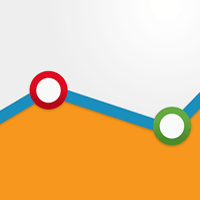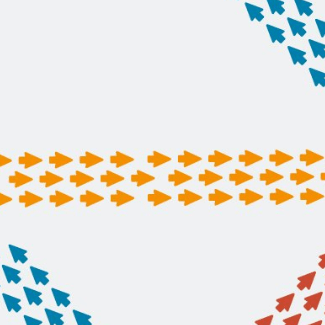How 1:1 Personalization has Overtaken Segmentation in 2017

There are many reasons why personalization has overtaken segmentation, and prioritizing personalized experiences will continue to grow throughout 2017 and beyond. Personalization helps businesses win the loyalty of customers by taking the experience to the next level. Segmentation alone will not connect your brand with your customers in a deeply meaningful way. Personalization is like the icing on the cake - it's the extra layer on top of segmentation that ensures marketing campaigns are relevant to audience needs and receptive to their behaviors.
Here are five ways businesses can utilize big data to make every experience feel personal.
Know your customers before they buy
Audience segmentation helps branding but hurts the customer experience because it's based on assumptions. This is why ecommerce retailers and large corporations have turned to the use of new-age digital and personal marketing techniques to replicate the small shop experience. The thing to remember is that technology can help deliver a personalized experience, but genuine human interactions are still a necessity.
Thanks to big data technologies, brands have the ability to get to know customers on a personal level before they even make a purchase. Data gives brands the opportunities to create memorable and personal interactions, become a customer's friend, and overall, improve customer experience.
Utilize context to create engaged customers.
It's essential to facilitate conversions while keeping in mind that no two customers are the same, and the same customer isn't even the same each time you make contact. This is why it's essential to introduce contextual marketing and geolocation into marketing campaigns so you can deliver the best offers for each person at the right time.
There are countless buyer personas and preferences, so learn how to tailor experiences to ensure repeat purchases and brand loyalty. For example, a 38-year-old male who has purchased from an online retailer while commuting to his job one week may be travel to Mexico for vacation the next. All the different customer personas and potential touch points need to be taken into consideration when marketing to today's highly connected customer. This calls for the right combination of individualized insights and connected interactions. Customers expect a seamless exchange over different channels in which they choose to do business - so make sure you deliver.
Turn to data to drive personalization
Today's marketers have the ability to translate customer data into live customer experiences. Big data gives the opportunity, for example, for flight attendants to know information about customers' previous flying experiences and identify who has had poor past experiences, such as lost luggage or delayed flights. This allows flight crew to offer these travelers services such as a stipend for booking future travel or a drink of choice.
Make sure to avoid superficial personalization. Adding a customer's name to an email campaign that doesn't align with their preferences isn't personalization.
Brand promise consistency
It's vital to ensure every interaction your audience has with your brand lives up to its promise - talk is cheap, so actions need to prove what your brand really stands for.
The marketing data you obtain has to be shared and used throughout your business. Think of marketers as curators of experience instead of simply broadcasters of your messages. Your brand promise should be what every employee refers to as they interact with current and prospective customers. Studies show that by utilizing big data to pair sales and customer service representations to the unique customer needs, you can significantly increase satisfaction. As you try to find ways to help your business succeed, and learn how social media can help boost your bottom line, remember that consistency is key.
Provide relevant and effective content
Content must be written to sell, though not in an obvious way. So much marketing content is vaguely interesting at best. Make sure your content has value and is viewed as part of or aligned with the products you sell. It must help solve the same problems the product solves in order for your audience to want to take the time to read it.
Having the customer data at your fingertips is helpful, but the way in which it's used is what is really important. The value in marketing now extends beyond delivering campaigns to actually building the sales pipeline. The evolution of personalization means that marketers have a responsibility to create stories and experiences that build the brand and customer loyalty, too. The way to find success starts with getting to know your customers as well as you know your family and friends.
How are you using personalization to attract and retain more customers?
Megan Totka is the Chief Editor for ChamberofCommerce.com. Chamber specializes in helping small businesses grow their business on the web while facilitating the connectivity between local businesses and more than 7,000 Chambers of Commerce worldwide. Follow her on Twitter or connect with her on LinkedIn.










